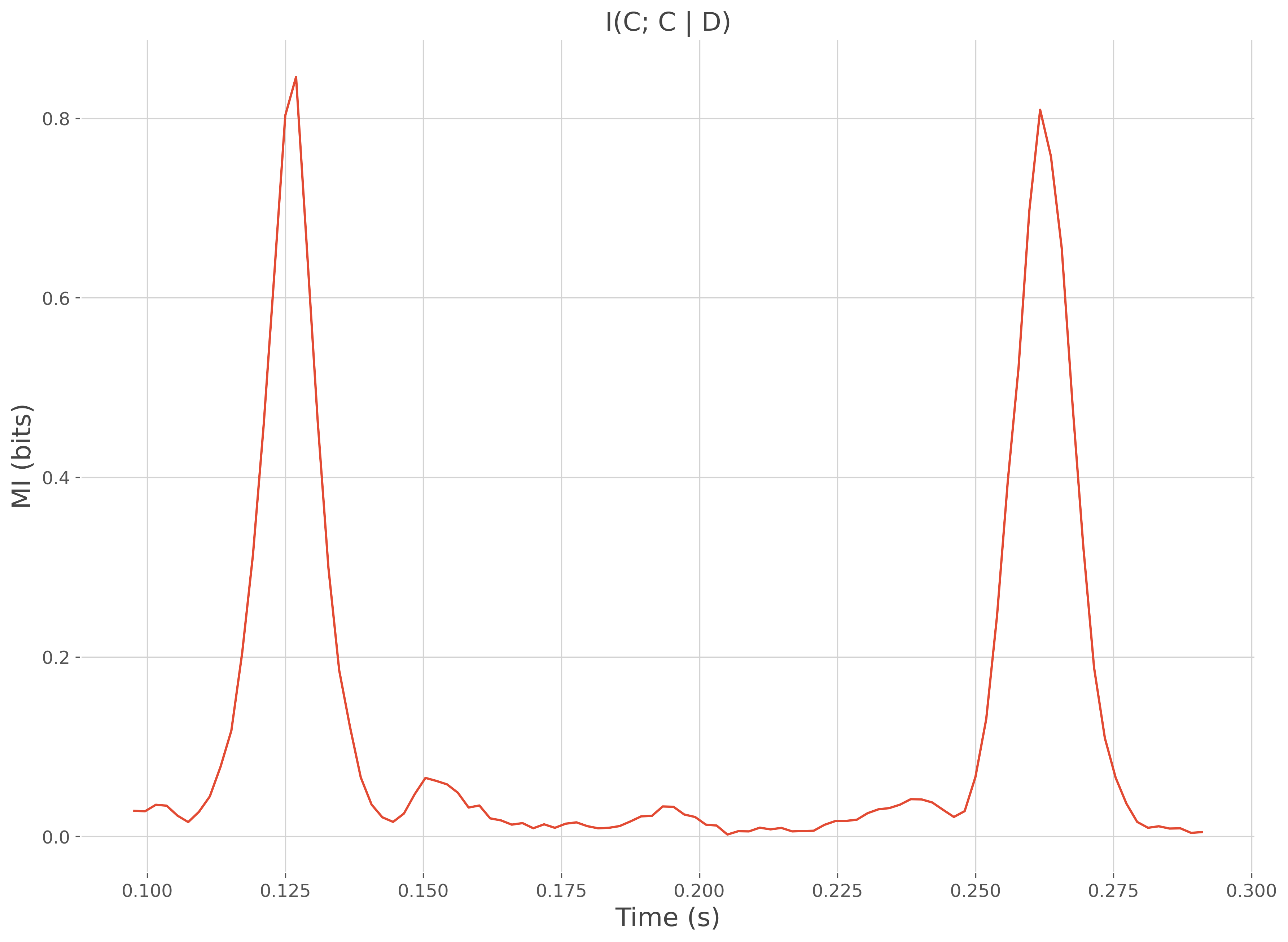Note
Go to the end to download the full example code.
MI between two continuous variables conditioned by a discret one#
This example illustrates how to compute the mutual information between two continuous variables, conditioned by a discret one. The first variable is an electrophysiological data (M/EEG, intracranial). The second continuous is usually a regressor and the third is a discret variable composed with integers generally describing conditions. This type of mutual information is equivalent to partial correlation. For further details, see Ince et al., 2017 [12]
from frites.simulations import sim_multi_suj_ephy, sim_mi_ccd
from frites.dataset import DatasetEphy
from frites.workflow import WfMi
from frites import set_mpl_style
import matplotlib.pyplot as plt
set_mpl_style()
Simulate electrophysiological data#
Let’s start by simulating MEG / EEG electrophysiological data coming from
multiple subjects using the function
frites.simulations.sim_multi_suj_ephy(). As a result, the x output
is a list of length n_subjects of arrays, each one with a shape of
n_epochs, n_sites, n_times
modality = 'meeg'
n_subjects = 5
n_epochs = 400
n_times = 100
x, roi, time = sim_multi_suj_ephy(n_subjects=n_subjects, n_epochs=n_epochs,
n_times=n_times, modality=modality,
random_state=0)
Extract the continuous and the discret variable#
Here we extract the continuous and the discret variables from the random dataset generated above
y, z, _ = sim_mi_ccd(x, snr=1.)
Define the electrophysiological dataset#
Now we define an instance of frites.dataset.DatasetEphy
dt = DatasetEphy(x, y=y, roi=roi, z=z, times=time)
Compute the mutual information#
Once we have the dataset instance, we can then define an instance of workflow
frites.workflow.WfMi. This instance is used to compute the mutual
information
# mutual information type ('ccd' = continuous; continuous | discret)
mi_type = 'ccd'
# define the workflow
wf = WfMi(mi_type=mi_type)
# compute the mutual information
mi, _ = wf.fit(dt, mcp=None, n_jobs=1)
# plot the information shared between the data and the regressor y
plt.plot(time, mi)
plt.xlabel("Time (s)"), plt.ylabel("MI (bits)")
plt.title('I(C; C | D)')
plt.show()

0%| | Estimating MI : 0/1 [00:00<?, ?it/s]
100%|██████████| Estimating MI : 1/1 [00:00<00:00, 14.71it/s]
100%|██████████| Estimating MI : 1/1 [00:00<00:00, 14.64it/s]
Total running time of the script: (0 minutes 2.449 seconds)
Estimated memory usage: 395 MB